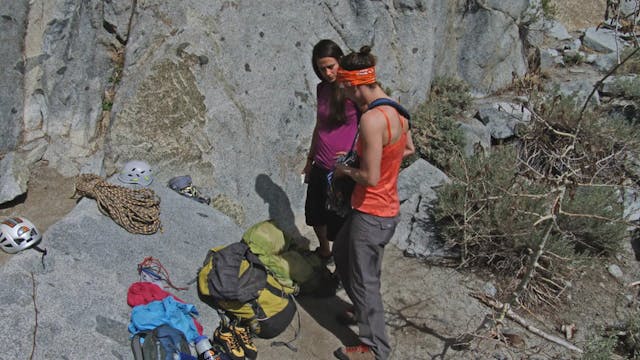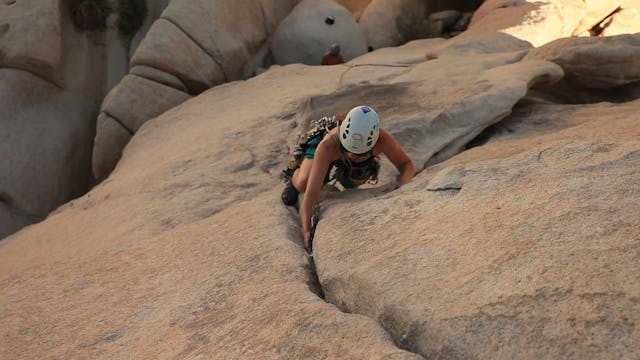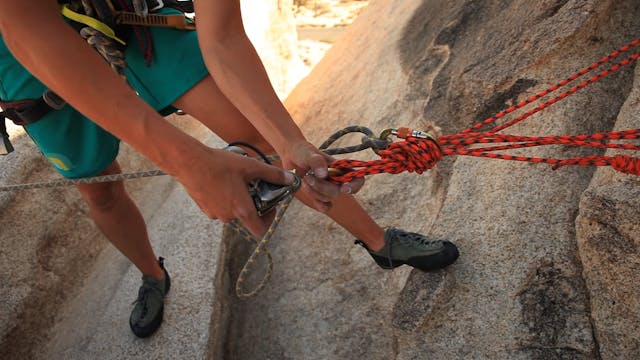Multi-Pitch Trad: 2. Belay Transitions
Multi-Pitch Trad Climbing
•
2m 56s
In this video we look at belay transitions during multi-pitch climbing. You’ll notice the theme throughout these considerations is efficiency. Time management in multi-pitch climbing is crucial when trying to make the most of daylight hours. Below are a few tips to consider for belay transitions:
1. The lead climber can notify the belayer as they near the anchor at the top of their pitch. This will allow the belayer to begin preparing to follow the climb while, of course, still ensuring a safe belay for the lead climber.
2. Keep the anchor simple and streamlined to speed your transition to climbing the next pitch.
3. Organize the rope when belaying from above. You can flake or stack the rope onto a nearby ledge or you can hang lap coils over your tie in rope. Keep these coils knee-length so they bow out—this helps reduce the likelihood they will snag when belay the leader on the next pitch. Neat coils of either style can be efficiently flipped over, pancake style (if stacked on a ledge), or flipped onto your belayer’s tie in (if leading in blocks, where the same person leads several pitches in a row).
Note: On low-angle slabs, you might instead like to make giant lap coils, shortening each as you go to avoid the snagging problem.
4. Whether swapping leads or climbing in blocks, think ahead to your next transition. Organize gear as you go, making it easily accessible for the next lead climber. Develop a system, as the follower or leader, that aids in your transitions, while still allowing swift climbing movement.
Remember time is of the essence in multi-pitch climbing. Consider a 7 pitch climb, if it takes 5 minutes to transition at the top of each pitch, that is 30 minutes of the day spent on belay transitions vs climbing.
We hope you found this video helpful. Feel free to comment below with questions or thoughts!
Please remember, climbing is inherently dangerous. Climb at your own risk.
Up Next in Multi-Pitch Trad Climbing
-
Multi-Pitch Trad: 3. Gear Considerations
In this video we look at the gear we often take on multi-pitch, traditional route. Every climb is unique and may require more or less gear depending on the weather, number of pitches, and length of the approach hike. Below is an example checklist for a 3-pitch route in the Sierra Nevada, expectin...
-
Multi-Pitch Trad: 4. Gear Logistics
First, decide with your climbing partner how you will lead and follow the route. There are two main strategies:
Swinging leads - This method entails each climber alternating leads and belays on each pitch throughout the climb.
Leading in blocks - This method entails one climber leading each...
-
Multi-Pitch Trad: 5. Non-Verbal Commu...
What happens when you can’t hear your leader yell “off belay!” An understanding of non-verbal communication is a simple skill, rooted in a few simple, common sense observations, that can add a tremendous amount of safety and efficiency to your climbing partnership.
Perhaps you have learned to ...


